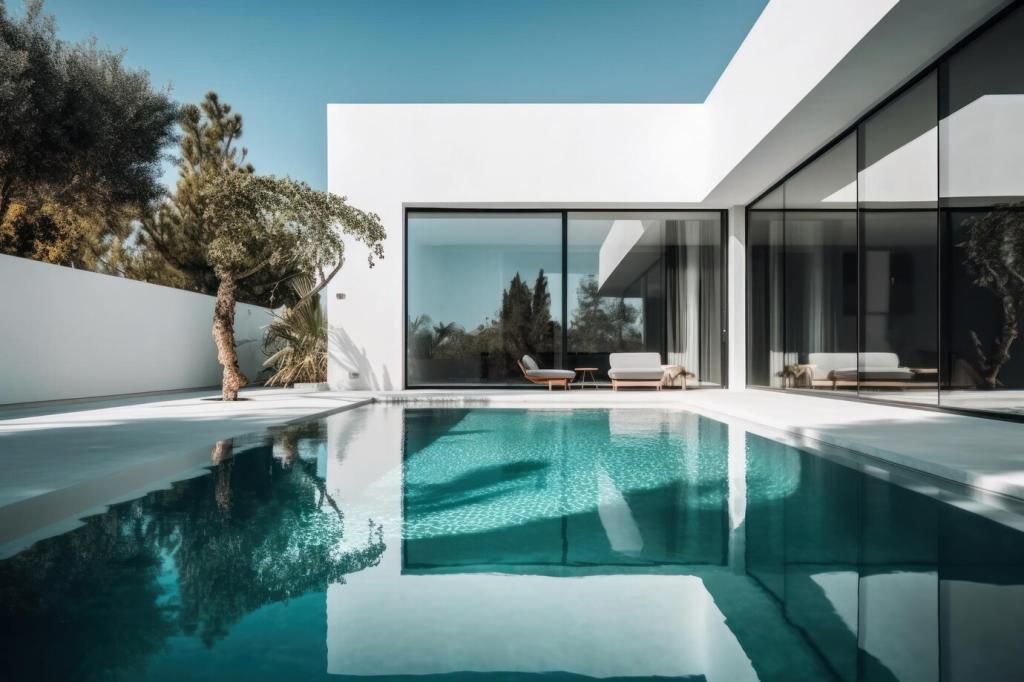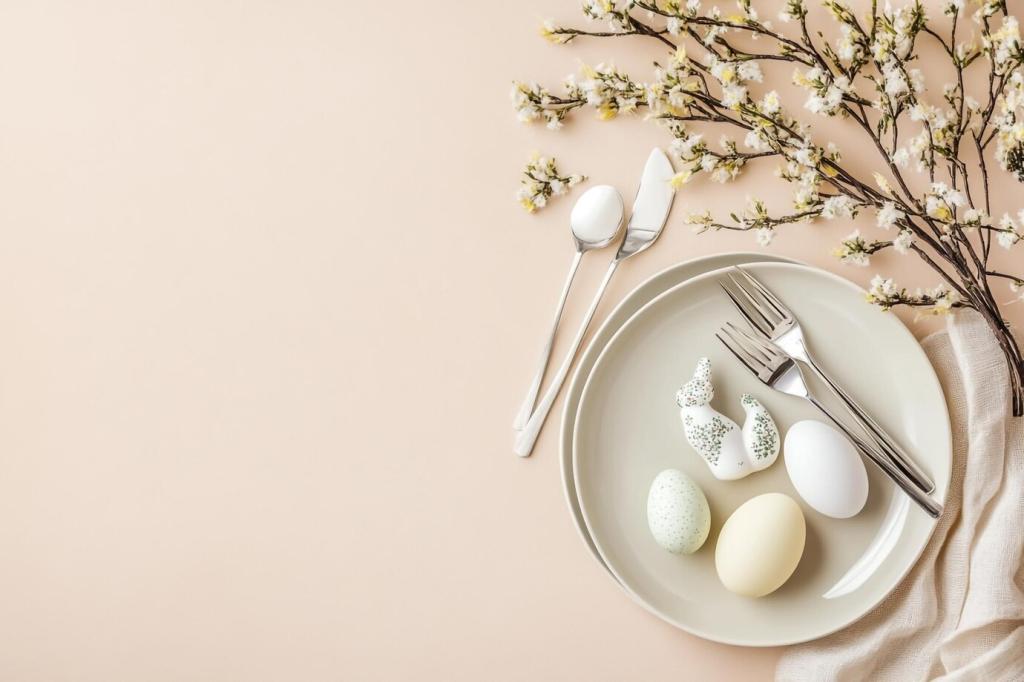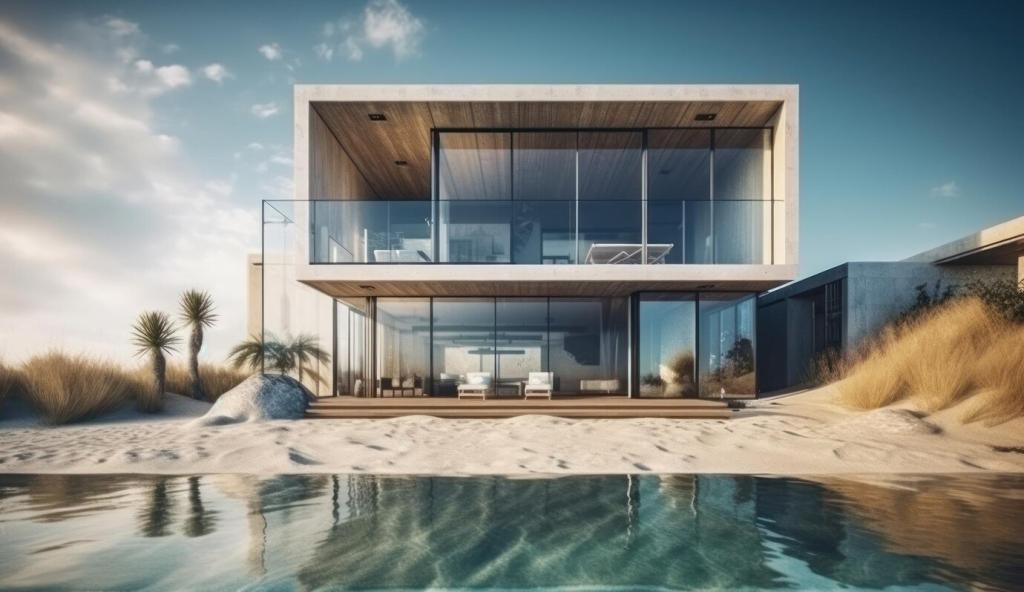Minimalist Interior Design Principles
Minimalist interior design is a timeless approach that celebrates simplicity, functionality, and the art of creating space. By focusing on fundamental elements and curating purposeful surroundings, this design philosophy creates serene, clutter-free environments that promote clarity and mindfulness. Rooted in the belief that less is more, minimalist interiors emphasize quality over quantity, allowing every object and design choice to serve a specific purpose. With its subtle elegance and calming atmosphere, minimalist design can transform living spaces into tranquil retreats that inspire balance and well-being.

The Essence of Minimalism
Philosophy of Less is More
The guiding principle of “less is more” sits at the heart of minimalist interior design. This philosophy contends that eliminating excess—whether in furnishings, decor, or even color—creates room for the essentials to shine. Minimalism encourages homeowners to intentionally select every piece within a space, ensuring it has genuine function or meaning. The result is an interior free from distractions, where each element contributes to a sense of harmony. This approach not only makes spaces appear more expansive but also fosters a deeper appreciation for well-crafted objects and materials, inviting occupants to experience their homes with greater clarity and purpose.
Visual Clarity and Calm
Visual clarity is a defining attribute of minimalist interiors, achieved through a restrained use of color, pattern, and decoration. By stripping away visual clutter, these spaces become sanctuaries of calm, inherently soothing to the senses. Carefully selected furnishings and streamlined architectural features prevent overstimulation, allowing natural light and simple forms to take center stage. The effect is a peaceful atmosphere that supports relaxation and mental clarity, making minimalism particularly appealing in today’s fast-paced world. In such environments, the mind can quiet, fostering restful living and the pursuit of introspective moments.
Authenticity Through Simplicity
Simplicity in minimalist interiors does not equate to sterility or lack of character. Instead, it paves the way for authenticity, allowing the true essence of materials and craftsmanship to shine. When ornamentation is pared down, the texture of a wooden table, the curve of a chair, or the grain of a stone countertop become focal points. This authentic approach imbues spaces with warmth and individuality, encouraging a connection between inhabitants and their environment. By celebrating honesty in design, minimalist interior principles prioritize enduring appeal and honest expression over fleeting trends.
Purposeful Possessions
Minimalist interiors encourage a deep evaluation of the purpose behind every item. Only possessions that serve a clear function or hold significant value are retained, while superfluous objects are relegated. This philosophy goes beyond mere organization; it asks homeowners to critically consider the role each belonging plays in their daily routines. By surrounding oneself only with meaningful possessions, spaces feel lighter and more coherent, making everyday living more efficient and emotionally satisfying. The process of paring down can be transformative, revealing which objects truly enrich life and contribute positively to one’s environment.
Organized Storage Solutions
Effective storage solutions are essential for sustaining a clutter-free, minimalist space. Clever storage, such as built-in cabinetry, concealed compartments, and multi-functional furnishings, keep everyday items accessible yet out of sight. These solutions allow residents to maintain tidy, streamlined interiors without sacrificing practicality. Thoughtfully designed storage fosters a sense of spaciousness and order, helping inhabitants resist the urge to accumulate unnecessary possessions. The result is a harmonious interplay between aesthetics and function, where clean surfaces reinforce the minimalist ethos and promote tranquility.
Previous slide
Next slide

Streamlined Forms and Clean Lines
Architecture in minimalist interiors is purposeful and pared back, with an emphasis on essential shapes and forms. Walls, windows, and built-in elements follow straightforward lines, forgoing ornate moldings or superfluous embellishments. This focus on underlying geometry provides a quiet backdrop against which furnishings and decor can stand out. Architectural simplicity not only clarifies the spatial organization but also allows for greater light penetration and movement, enhancing the sense of openness and tranquility throughout the interior.
Neutral Color Palettes
White, gray, and earthy shades are favored in minimalist interiors for their ability to reflect light and foster an open, expansive feel. These colors do not compete for attention but instead function as a harmonious background that lets furnishings and architecture take the spotlight. Each shade is chosen for its subtlety and adaptability, offering infinite combinations that avoid monotony. In a minimalist home, these hues encourage relaxation, ensuring that visual interest arises from form, texture, and thoughtfully curated art rather than bold color statements.

Quality Over Quantity
Investing in Timeless Pieces
In minimalist design, every object counts, so investing in timeless, well-made pieces is paramount. Classics such as an iconic lounge chair, a handwoven rug, or a carefully crafted dining table provide both functional value and lasting style. These items serve as quiet anchors amid the simplicity, embodying the minimalist tenet that beauty endures when rooted in quality. Selecting durable, versatile pieces reduces the frequency of replacements and contributes to a sustainable, enriching living environment.
Craftsmanship and Material Integrity
Exceptional craftsmanship and authentic materials are highly prized in minimalist interiors, where details are magnified by the absence of distraction. Solid wood, natural stone, and finely woven textiles are preferred for their beauty, durability, and honest expression. The visible grain of oak or the texture of linen gains prominence in pared-down settings, fostering a tactile connection with each piece. By choosing furnishings and finishes that wear beautifully and reflect artisan skill, minimalist interiors achieve understated luxury and long-term value.
Avoiding Overfurnishing and Excess
Minimalist spaces are meticulously curated to avoid both visual and physical crowding. Rather than filling every gap, emphasis is placed on leaving room for adaptation and breathing space. Each furnishing or accessory must justify its presence; redundant or purely decorative items are avoided. This approach not only ensures functional clarity but also helps to maintain an atmosphere of unhurried calm. By restraining the impulse to accumulate, minimalist interiors stay adaptable, allowing inhabitants to evolve their spaces with intention and grace.
Light and Space
Maximizing Natural Light
Minimalist interiors are positioned to take full advantage of available natural light. Large windows, skylights, and glass doors welcome sunlight, washing walls and floors with a gentle, ever-changing glow. Sheer window treatments or the absence of drapes ensure no obstacle interrupts the view or reduces illumination. Abundant daylight not only makes rooms feel larger and more uplifting but also enriches the colors and textures of furnishings, reinforcing the connection between interior and exterior worlds.
Open Floor Plans and Flow
The minimalist approach often favors open floor plans that merge living, dining, and kitchen areas without partitions. This spatial fluidity enables light to travel freely and prevents any area from feeling confined or segregated. Carefully selected, multi-purpose furnishings define individual zones while maintaining overall flow. This openness fosters interpersonal connection, maximizes functionality, and creates an expansive, unbroken atmosphere that reflects the design’s emphasis on simplicity and freedom.
Visual Expansion and Transparency
Transparency and visual expansion are furthered by the selective use of glass, mirrors, or unobtrusive partitions that preserve sight lines and enhance the sense of depth. These elements allow rooms to borrow light and views from one another, lending a greater sense of spaciousness. The careful arrangement of furniture and circulation paths ensures that even compact interiors appear airy and inviting. In minimalist environments, such strategies create a powerful interplay between light and space, uplifting mood and supporting harmonious living.

Functionality as Beauty
Multi-Purpose and Modular Elements
Functional versatility is celebrated through multi-purpose and modular furnishings that adapt to changing needs. Examples include extendable tables, convertible seating, or modular shelving systems that offer storage and display. This adaptability allows minimalist spaces to accommodate various functions without the clutter of redundant pieces, preserving openness and order. Configurable elements ensure spaces remain practical, making minimalist homes as liveable as they are beautiful, and underscoring the importance of agile, future-proof design choices.
Streamlined Daily Routines
Minimalist interiors are designed to simplify daily routines, eliminating obstacles and unnecessary steps. Everything, from furniture placement to storage access, is optimized for ease of use. Items are stored close to where they are used most, and visual cues are minimized to reduce distractions. This thoughtful layout makes for more intuitive navigation and efficient living, allowing inhabitants to focus on what matters and streamlining their experience of home. The result is a lifestyle where functionality intersects gracefully with aesthetic restraint.
When Form Follows Function
Design in minimalist interiors is led by the axiom “form follows function.” Aesthetics are derived from necessity, and every object is chosen for its ability to fulfill a specific role elegantly. Whether it’s a purposeful reading nook or a recessed handle on a cabinet, these details enrich the visual language of minimalism precisely because they emerge from practical need. By ensuring beauty grows from utility, minimalist interiors become environments that are not only visually harmonious but also deeply satisfying and supportive of daily life.
